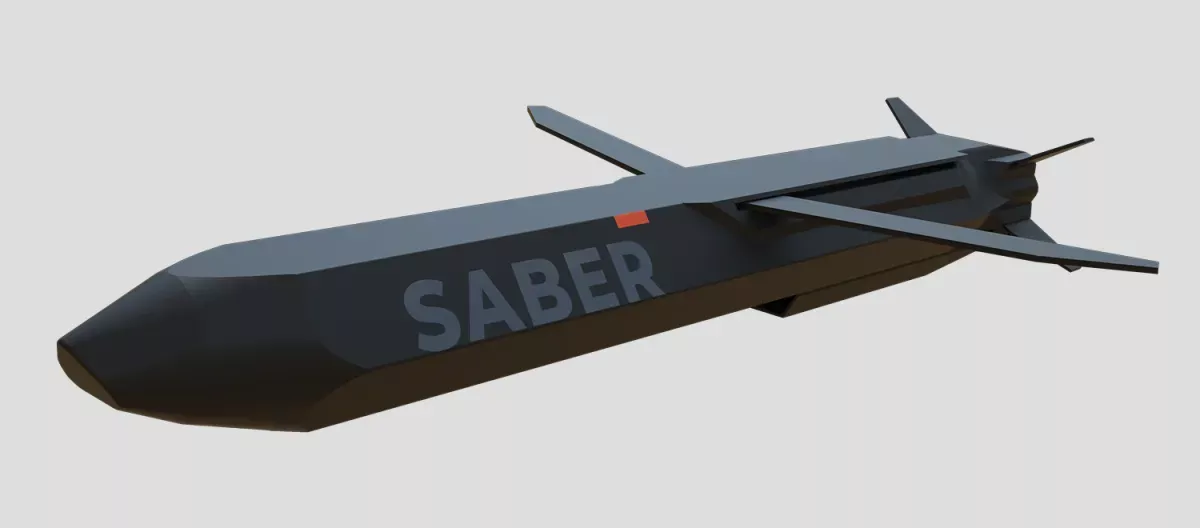
Saber missile
A new job advertisement posted on the Edge Group’s website asks for a senior engineer with a specific set of skills for the United Arab Emirates (UAE) defense conglomerate’s Halcon division for weapon systems and robotics.
The solicitation, released on Nov. 2, describes plans by the four-year-old company to hire an engineer with at least a master’s degree “in the field of turbomachinery” to “design from first principles axial compressors, centrifugal compressors, axial or radial turbines” and “work with suppliers to produce high-precision and quality designed components [within] the schedule of the project.”
Since Edge was founded in 2019 by consolidating 20 different UAE-based entities specializing in defense products and services, the conglomerate has secured a more than $1 billion deal to deliver armed corvette ships to the Angolan navy, launched an indigenous counter-rocket, mortar and artillery system and unveiled a wide portfolio of munitions and uncrewed aircraft systems (UAS).
The job ad, along with a recent strategic agreement signed with a Brazilian aircraft propulsion specialist, reveal plans to expand Edge’s portfolio further into the field of weapons propulsion.
The recent moves also follow the company’s strategy to blend indigenous development and acquisitions or partnerships with foreign firms, including several that are attempting to develop advanced technologies with relatively few financial resources.
Edge’s plans to produce powered munitions became clear two years ago. In 2021, the Abu Dhabi-based company unveiled a mockup of the subsonic, 1,200-kg (2,650-lb.) class Saber cruise missile. The UAE has also imported the MBDA Scalp cruise missile, but Edge wants to provide an option for domestic and international buyers. The source of the turbofan for the Saber missile was a mystery when the mockup was revealed.
More recently, Edge has updated the website for the Saber, confirming that the cruise missile will be powered by “Turbofan 400.” The company has released no further details.
In August, the UAE company revealed a clue about the source of the Saber’s engine. Edge announced a strategic partnership with Jacarai, Brazil-based Turbomachine. The latter is the developer of the TJ1000, a 1,000 lb.-thrust turbojet selected to power the Avibras MTC-300 ground-launched cruise missile.
Turbomachine has previously revealed larger plans for missile propulsion, including ongoing work designing a 6,000 lb.-thrust, two-spool turbofan for unnamed missile and UAV applications.
In an overlooked statement released by Edge in August, Hamad Al Marar, president of Edge’s Missiles and Weapons cluster, said the partnership with Turbomachine would help the company produce more powerful drones and missiles.
“We look forward to developing gas turbine engines and plasma-assisted combustion solutions which will increase the power and performance of EDGE’s portfolio of UAVs and missiles,” Al Marar said.
Plasma-assisted combustion is typically associated with high-speed propulsion. To offset the difficulty of maintaining an ignition source in a high-speed airflow through a combustor, plasma-assisted combustion has been proposed as an alternative to conventional methods, such as acetylene. But the concept is usually associated with the fastest forms of propulsion systems, such as scramjets for powering hypersonic vehicles.
